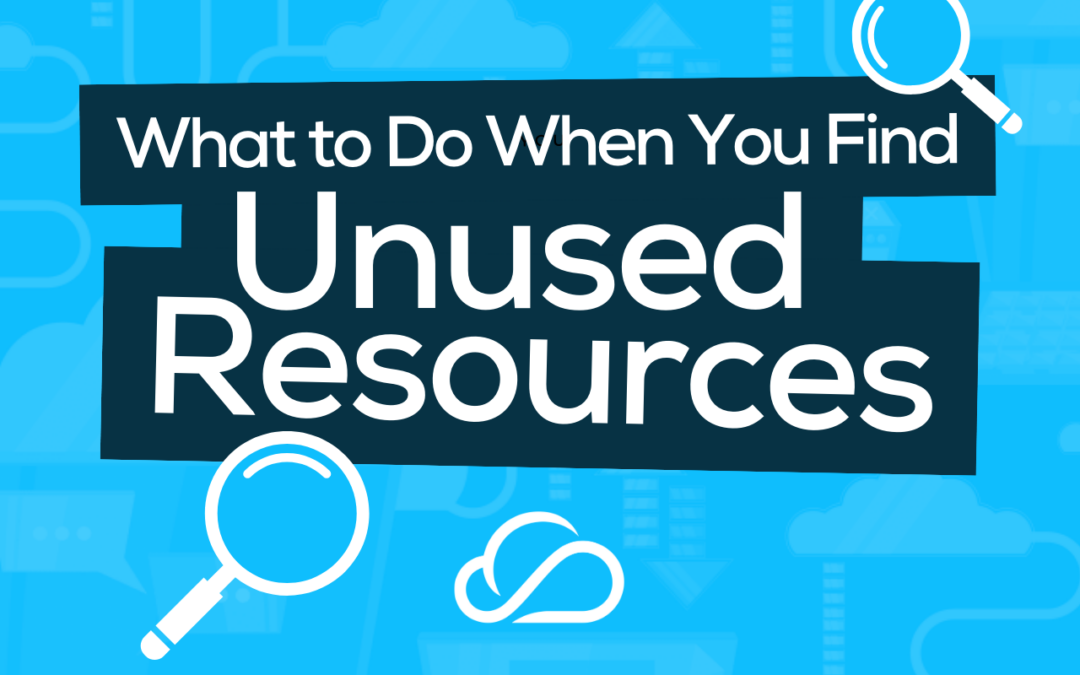The financial consequences of unused resources are vast, leading you to spend more on services per month and ignore what that money can actually help with regarding your cloud journey. Remember, as your cloud usage grows, so does the likelihood of unused resources taking up space and money.
- An unused resource within the cloud is a resource that has not been utilized and has been idle for a long time.
- Unused resources can occur because of software updates, cloud migrations, system changes, or simply long-term cloud use.
- Unused resources will likely build up without proper visibility, monitoring, or management of your cloud platform.
So, when you find unused resources in your AWS, Azure, or GCP platforms, here are your next steps to ensure you stop paying for what you are not using.
Investigate the Resource’s Data
Before you do anything with the resource, take the time to look into what it is, where it came from, where it originated, and if it was of any use in the past. The resource’s data can provide a blueprint for your next steps and also lead you to other areas where unused or orphaned resources might be hiding. This data can show whether you have ever used it before or if it slipped out of its placement. While it is likely that you will no longer need the resource, you want to be sure it wasn’t something necessary.
If It Is Necessary Only at Certain Times, Schedule Accordingly
As you go through the resource’s data, you might find that it was a task used during your company’s peak time, lost in the latest cloud migration, or serves a very specific purpose. If that is the case, it might be better to rehome the resource rather than get rid of it. If it is integral at a certain point in your business, it is wise to schedule it to only run during that time of the year rather than year-round. This will save you money and keep your resources better organized in the long run. The simplest answer to finding an unused resource that turns out to be important is to properly organize and schedule it to ensure you can monitor and manage it successfully.
Overall, Delete the Resource Altogether
However, more often than not, when you find unused resources, they are likely unused for a reason. If they fell off during a migration, got replaced by new upgrades or software, or were never necessary in the first place, it is time to delete them. In platforms such as AWS and Azure, you can find unused resources through their dashboards and tools, which also provide ways to mass delete resources. With these tools, it can make the process of deleting dozens to hundreds of unused resources quicker and easier. Before deleting, it is wise to save any necessary data that they were holding to ensure you are not losing anything that could be important later on.
Take the Proper Steps to Avoid Unused Resources Clogging Up Your Cloud
After you’ve taken the time to assess and dictate what to do with your current unused resources, it is time to develop a plan to ensure you are not compiling more unused resources in the future. To avoid unused resources, you should take proper precautions when you make any significant changes within your cloud system. If you choose to migrate from one cloud to another, merge clouds, integrate new upgrades or schedules, or bring on new protocols, ensure you are doing so with a close eye on your resources. The higher your visibility is during these times, the more you can stop unused resources from occurring and taking up your cloud budget.
Unused resources can lead to overspending on your cloud. If you don’t want that to happen, it is time to find and delete them accordingly. If you have further questions or want to ensure you are not overspending on your cloud, contact the team at FinOps Oversight.

